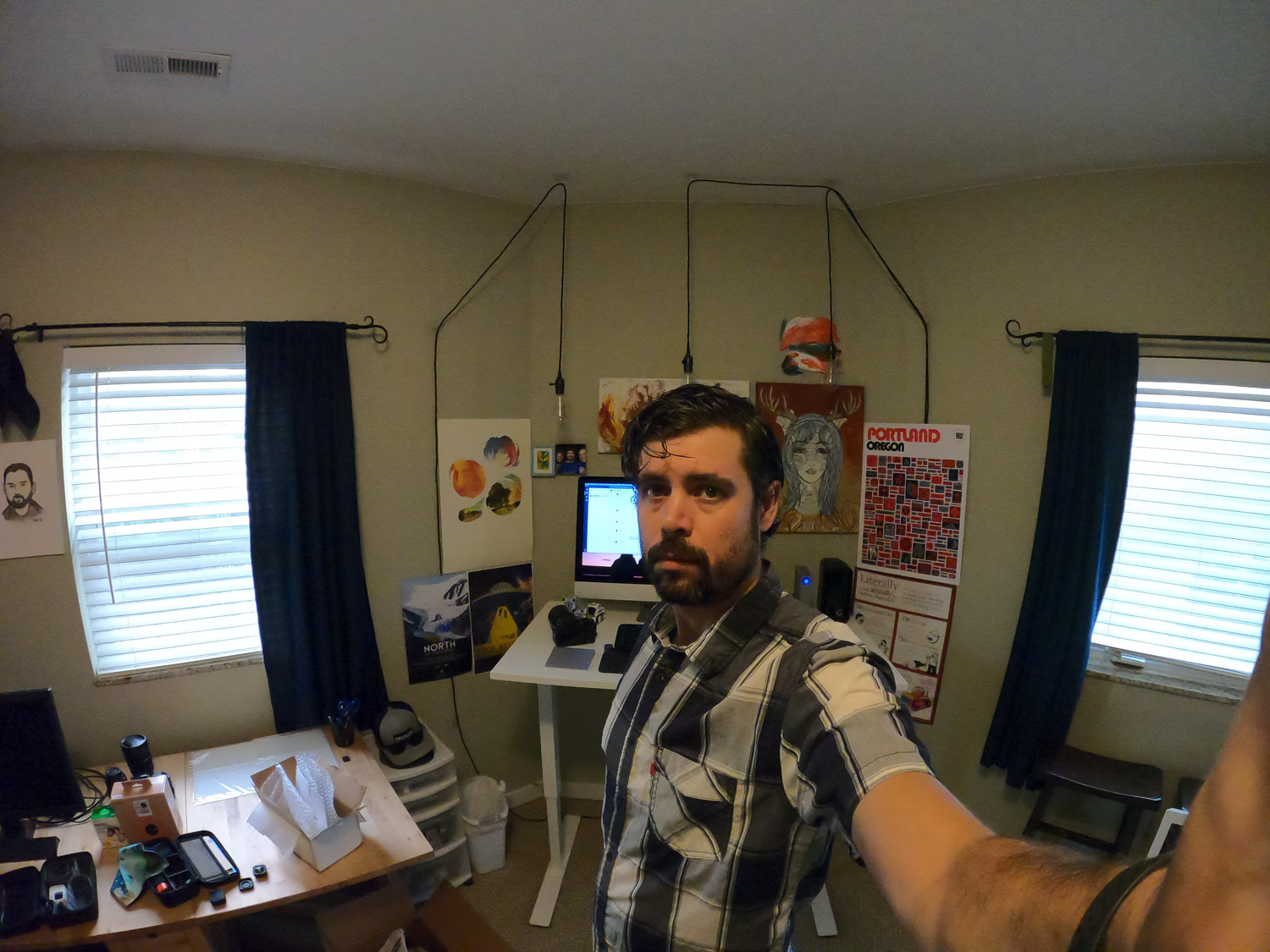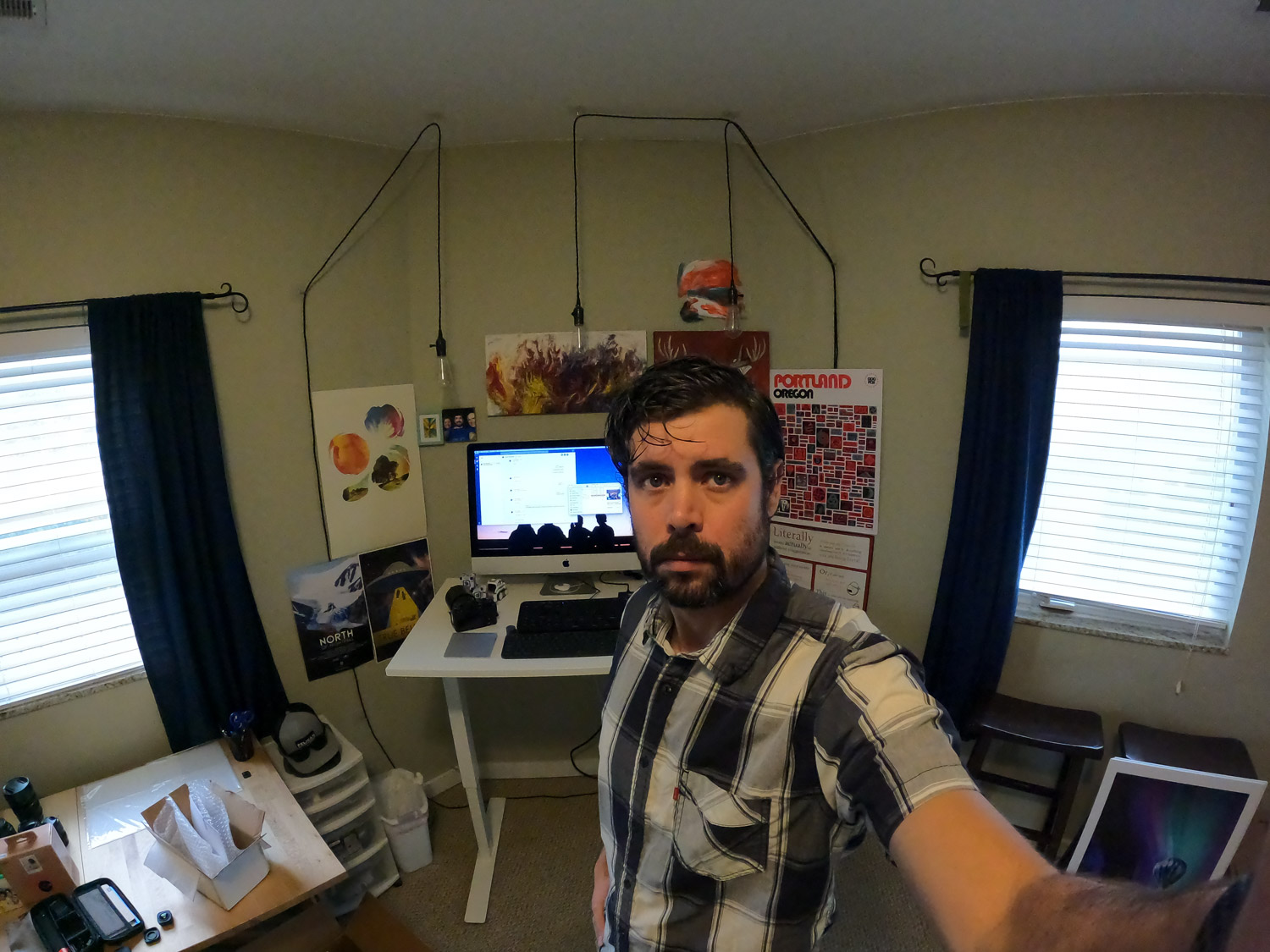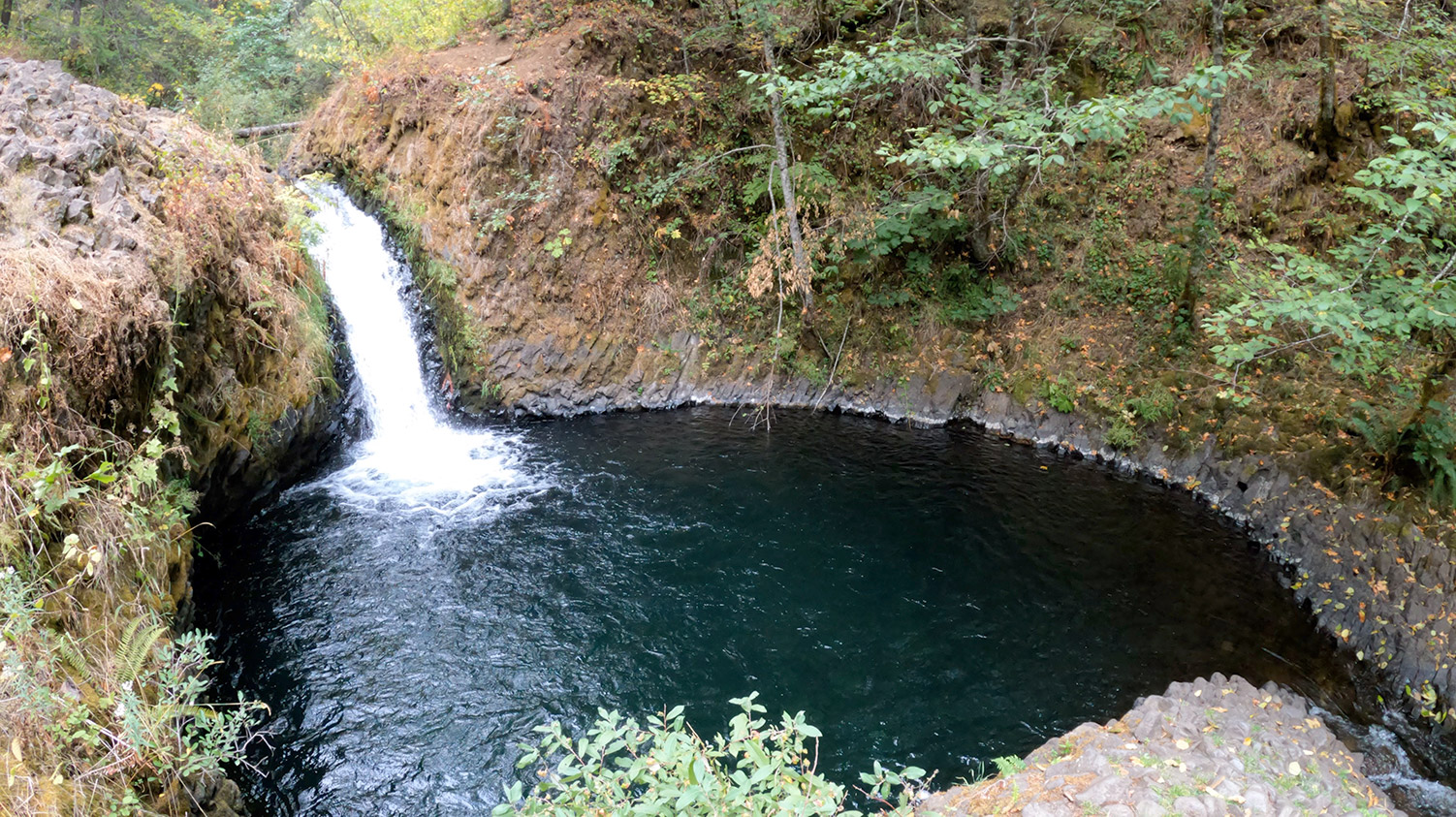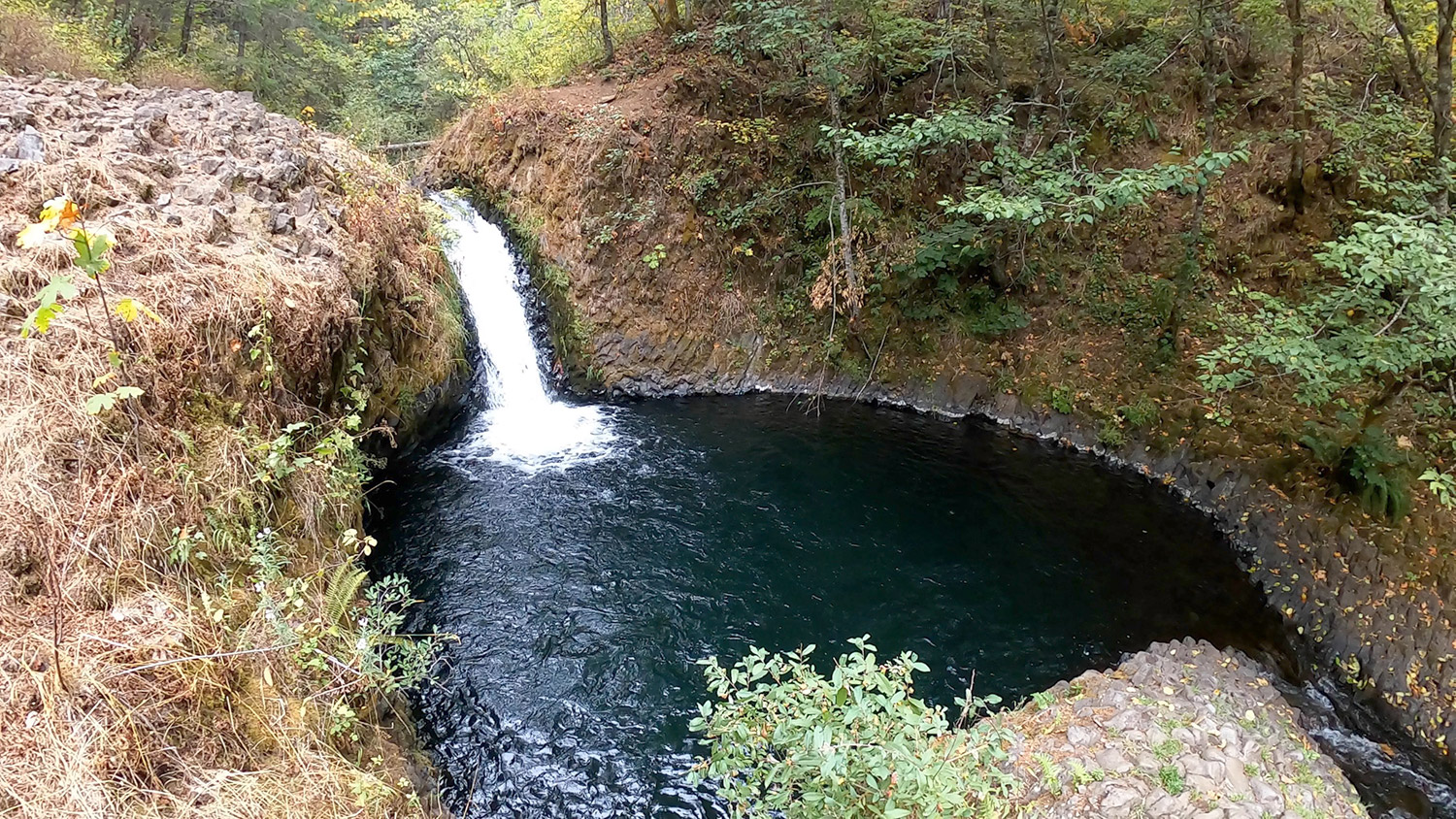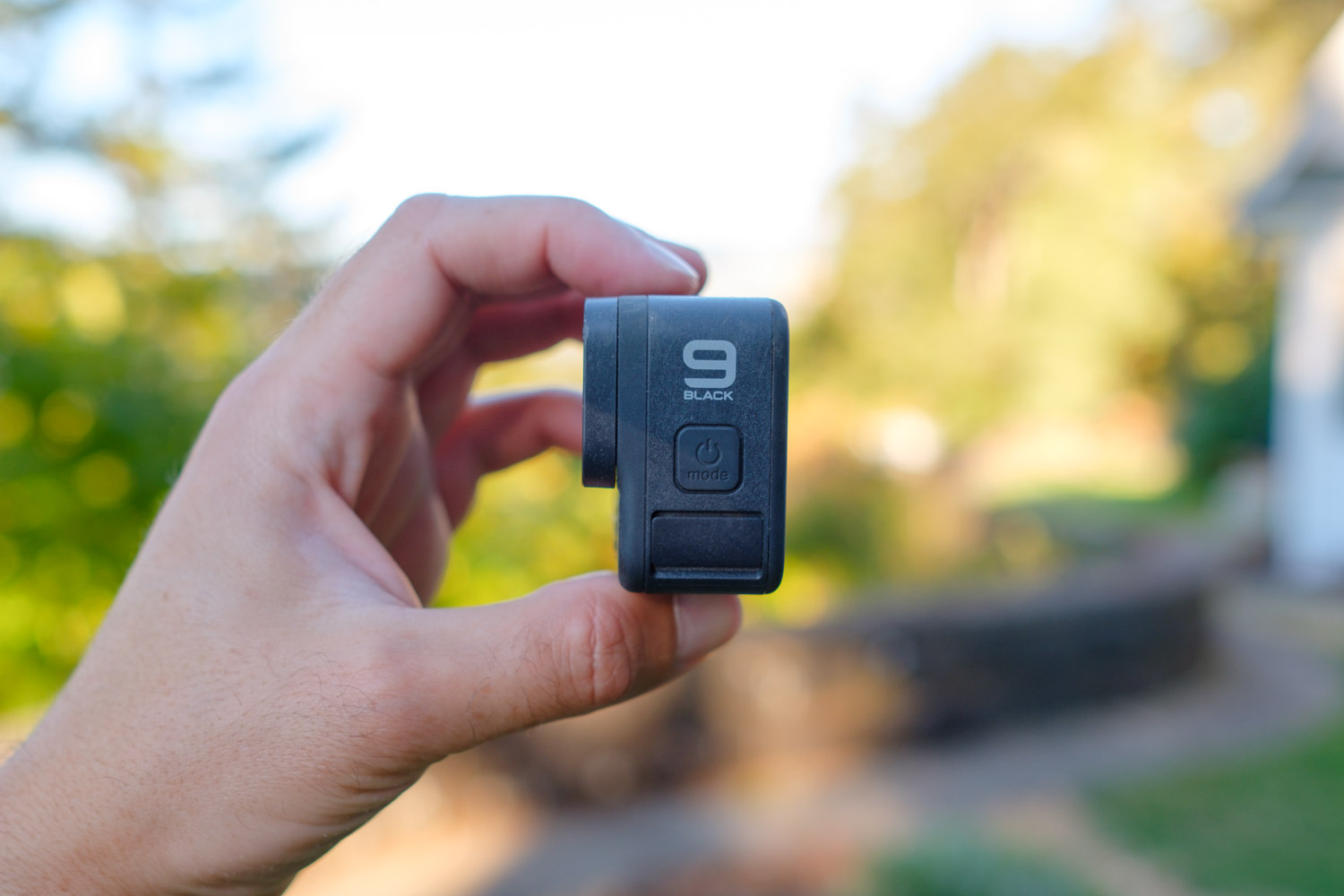“The Hero9 Black is as good as it gets, but its major improvements hold little real-world benefit over the Hero8.”
- Front screen
- Larger rear screen
- Higher-capacity battery
- Supports Max Lens Mod
- 24MP stills
- Bulkier compared to Hero8
- 5K video feels pointless
- Incompatible with Hero8 Media Mod
The GoPro Hero9 Black is here, and in some ways, it’s a bigger jump forward than I expected. It brings the first new sensor in several generations and adds a front LCD screen. There’s also a new Max Lens Mod accessory which gives the camera a nearly hemispherical field of view.
But I have to wonder. Will anybody really care?
On my last GoPro review, for the Hero8 Black, a viewer commented something along the lines of, “They’re still making these things? I thought they stopped around the Hero4.” It’s a sentiment that isn’t felt only by random casuals on YouTube. Even my editor was shocked when I told him I was reviewing the Hero9; he had just been talking about the Hero5 and suddenly realized he was referencing a camera four generations out of date.
After spending some time with the $450 Hero9 Black, I’m still not sure where I stand. It is undeniably the most capable action camera yet, but some of the changes are controversial — even frustrating.
Function over form
The Hero8 Black was a big deal. It introduced the first physical redesign to GoPro’s popular action camera line in several generations, making it smaller and sleeker while incorporating the mount right into the camera itself.
The Hero9 Black backtracks on much of this.

It is heavier than the Hero8 and larger in every dimension, although it maintains the built-in mount and likewise still comes out slightly smaller than an older Hero7 in its requisite mounting frame. The removable lens cover, gone from the Hero8 to keep the camera slim, returns. This is what enables support for the aforementioned Max Lens Mod, but it also makes the Hero9 look more like a Hero7. The result is a camera that looks dated when seen side-by-side with the Hero8.
GoPro has at least put the Hero9’s extra space to good use, adding a higher-capacity battery, increasing the size of the rear LCD screen, and, of course, adding a front LCD screen. Overall, it brings more hardware changes than I would have expected for a camera line that received a full redesign just a year ago.

But some functionality has been hampered by the Hero9’s bulkier body, and it’s not just the tighter fit in your pocket. The GoPro Media Mod, one of the core upgrade accessories introduced with the Hero8, won’t fit the Hero9. Instead, you’ll have to buy a new, Hero9-specific version of it, which is disappointing.
More power, more pixels
GoPro’s tagline for the Hero9 Black is “more of everything,” and it certainly rings true. The new sensor sensor enables 20-megapixel photos and 5K video at 30 frames per second, and the new battery extends operating time by 30% over the Hero8. But more doesn’t always mean better, and I don’t buy the hype about the increased resolution. On paper, 5K sounds like a significant leap, about 15MP in every frame compared to 4K’s 8MP.
But in practice, I couldn’t really tell you the difference.

Video compression and lens softness were already limiting factors of resolution in previous GoPros. Plus, the simple nature of how an action camera is used — usually with lots of motion in the shot — means that extra resolution doesn’t always provide a benefit. And with all the emphasis put on editing and sharing content via GoPro’s (admittedly very good) mobile app, more resolution just slows the process down.
GoPro seems to be at least somewhat open about this, touting the 5K video feature as a way to extract higher-resolution still photos, which may be a more practical application of the feature than shooting 5K video for the sake of 5K video. Essentially, you can shoot 15MP stills at 30 frames per second.
I wouldn’t expect an appreciable jump in image quality with the Hero9, even with an extra thousand lines of resolution.
I’d like to think that GoPro is considering the desires of professional filmmakers alongside those of the average customer when it does things like put 5K into a camera, but I wouldn’t expect an appreciable jump in image quality with the Hero9, even with an extra thousand lines of resolution. It’s not like the sensor is physically larger, so noise is still a problem outside of bright light. Video data rates also still top out at 100 megabits per second, whether in 4K or 5K, so compression remains a limiting factor. And, perhaps most significantly, the lens isn’t sharp enough to take full advantage of
In my testing, both 4K and 5K footage looked soft — the 5K footage just let me zoom in further to the softness, which is pointless. When normalized to 2K resolution, there was an all-but-imperceptible difference when pixel-peeping one frame at a time, which seemed to have a small benefit in rendering text, but that’s about it. I have to conclude, then, that whether for video or extracting stills, 5K just doesn’t seem worth it.
As for actual still photo mode, I did notice a much bigger difference between the Hero9’s 20MP output and the Hero8’s 12MP. But, it isn’t anything earth-shattering and the advantage vanishes as soon as you find yourself in less-than-ideal lighting, as the Hero9’s noise reduction seems to be even heavier-handed than the Hero8’s. Comparing the cameras indoors, I actually preferred the Hero8 photos over the Hero9’s because of this.
Let’s do the TimeWarp again
Of all the upgraded features in the Hero9 Black, my favorite is TimeWarp 3.0. TimeWarp is GoPro’s built-in hyperlapse video function, which records stabilized time-lapse footage. Version 2.0 in the Hero8 was already a favorite of mine. It introduced two important upgrades: The ability to automatically set the time-lapse speed based on camera movement, and the option to slow down the video to real-time at any point during the recording with the press of a button.
TimeWarp 3.0 takes this a step further. Not only can you slow down to real-time, but you can even slow down to half speed for slow motion. Being able to mix time-lapse, real-time, and slow-motion video together in a single clip without any editing is the type of simplicity that makes a GoPro a GoPro.
More, you can now record audio during the real-time portions of a TimeWarp. This makes the feature much more flexible. I do a lot of hiking — the closest I get to extreme sports — and TimeWarp is a great way to capture a hike, which otherwise makes for rather boring footage. The ability to capture audio during the real-time segments means I’ll never miss my astonished reaction to a double rainbow or the sounds of a rushing waterfall, where previously I had to rely fully on a music track.
Being able to mix time-lapse, real-time, and slow-motion video together in a single clip without any editing is the type of simplicity that makes a GoPro a GoPro.
TimeWarp 3.0 is far from the only new software feature. HyperSmooth stabilization also hits version 3.0, and now features in-camera horizon leveling. Additional new features come under the new category of PowerTools, where you’ll find functions that were previously limited to the experimental GoPro Labs preview program. These include scheduled capture and duration capture, which work together to fully automate a Hero9.
Scheduled capture allows you to program a time for the camera to turn on and start shooting, which is perfect for capturing everything from an early sunrise to a rocket launch. Duration capture lets you set a recording time anywhere from 15 seconds to 3 hours, and the camera will automatically turn off after that period.
The other new PowerTool feature is called HindSight. This is a buffered video mode that saves up to 30 seconds of footage from before the record button is pressed. This mode is most useful when you’re trying to capture a decisive moment, like nailing a skateboard trick, but don’t know for sure when it’s going to happen. With HindSight, you can hold off on pressing record until just after the moment happens, drastically reducing the amount of junk footage.
Maximum mods
It’s hard not to feel sorry for anyone who dropped $160 on a Media Mod and Display Mod to add a front-facing screen to their Hero8 Black. Not only does the Hero9’s built-in front screen obviate the need for the LCD mod, but it also doesn’t work with the Hero8’s media mod at all.

But it’s not all bad news. The $99 Max Lens Mod, coming in October, is something genuinely new and unique to the Hero9. Named after the GoPro Max 360 camera, the Max Lens Mod brings a taste of spherical video to the Hero9 Black. It can’t convert it into a full 360-degree camera, as we’ve seen with the modular Insta360 One R, but it does add a super-wide, 155-degree field of view. It also enables Max HyperSmooth at resolutions up to 2.7K for even greater stability and horizon leveling that works even if the camera does a barrel roll.
I was provided a Max Lens Mod for this review, and it does make for a noticeably wider and more stable image. However, I’m not sure it’s a necessary investment, given how wide and stable the Hero9 is by itself, but there will probably be some niche applications that can benefit from it.
A new way to buy
GoPro is giving customers two different ways to purchase the Hero9 Black. You can pick it up by itself for $450, but if you add a year’s subscription to GoPro, that price drops to just $350 — including the price of the subscription. To be clear, it is cheaper to buy a Hero9 and a GoPro subscription than to buy a Hero9 by itself.
On the surface, this sounds like an incredibly valuable proposition. The subscription, normally $5 monthly or $50 annually, grants access to unlimited cloud storage, a reduced-cost replacement for broken cameras, and steep discounts on accessories.
For anyone considering a Hero9 Black, it pays for itself immediately.
Plus is also GoPro’s attempt to move toward a product-as-service model, something that has grown increasingly popular with all types of tech hardware, from smartphones to game consoles. This increases friction for a customer who might want to switch to another brand. Should you sign up for a GoPro subscription and decide to cancel down the road, you’ll have to be ready to transfer all those cloud files somewhere else.
So don’t take the decision to enroll lightly, but for the right type of customer, a GoPro subscription (formerly GoPro Plus) has always paid for itself over time. And for anyone considering a Hero9 Black, it pays for itself immediately. The Hero8 Black and Hero7 Black have also been added to this promotion.
Our take
My opinion of the GoPro Hero9 Black may be underwhelming, but this is only because the Hero8 Black was already such a solid camera. I’m glad to see that GoPro put some emphasis on quality-of-life improvements, like increased battery capacity and the return to a swappable lens cover, but I do miss the Hero8’s sleeker profile.
The other updates largely concern limited use cases. The front screen will be a welcome addition for vloggers, but isn’t necessary for most customers. The Max Lens Mod is cool, but not a must-have feature and certainly not a replacement for the actual GoPro Max. Finally, the extra resolution just doesn’t feel that important, either for stills or video.
The software improvements are certainly nice, but not every feature is going to appeal to every customer, and none are things that couldn’t technically have been added into the Hero8 via firmware (and a few already existed under the GoPro Labs umbrella).
I was a big fan of TimeWarp 2.0 in the Hero8, and I love the Hero9’s TimeWarp 3.0 even more. But for me, a Hero8 Black with TimeWarp 3.0 would be everything I need. If the Hero9 offers a capability you can’t get anywhere else, maybe it will be worth it for you, but I’m not sure I would pay $450 (or $350) to access the upgraded version of the one feature I really want.
Is there a better alternative?
No. And that’s the thing — even though I don’t find it personally that exciting, the Hero9 Black is as good as it gets. It’s just that last year’s model was already better than what most people needed.
How long will it last?
Like any action camera, the Hero9 Black can take a beating, but the rubberized exterior does scratch somewhat easily. Expect a replacement model in 12 months, but there’s no reason the Hero9 won’t remain useful for several years.
Should you buy it?
Only if you don’t have a recent GoPro. The Hero9 Black is easy to recommend to new GoPro customers or those upgrading from much older cameras. However, owners of a current GoPro camera shouldn’t feel the need to upgrade.

